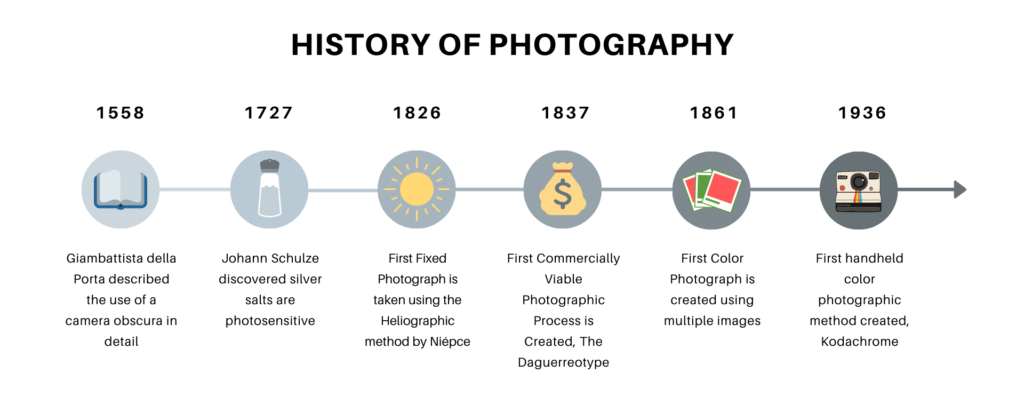
What is Photography?
In 1839, British scientist Sir John Herschel first coined the word photography from the Greek words phos, meaning “light”, and graphê, meaning “drawing or writing”. Photography literally means “drawing with light”. In a technical sense, photography is projecting an image through a hole or lens onto a photosensitive surface for the purpose of making a permanent or “fixed” image.
Photography is also about depicting the world. A painter can paint anything they choose, only limited by the bounds of their imagination, a photographer makes an accurate representation of something in the real world.
Camera Obscura
A camera obscura or pinhole box is a dark chamber or room with a hole in one wall that projects images of subjects outside the room on the wall opposite the hole. The projected image is upside down. The first record of the idea is from the Chinese in 4th Century B.C. Aristotle also spoke of the principles of the camera obscura in the 4th Century B.C.
In 1558, Italian scientist and writer Giambattista della Porta described its use as a drawing aid in detail in his popular books. He was the first to popularize the idea for widespread use.
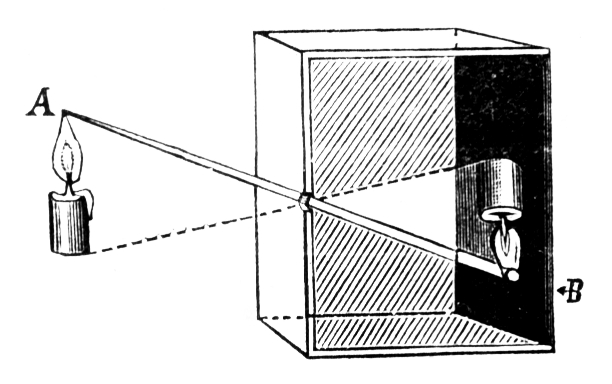
In the Renaissance artists used the camera obscura to create more accurate depictions of nature by tracing landscapes. The accuracy of the final image was based on the skill of the artist. Because of this, a more mechanical and automatic solution was desired.
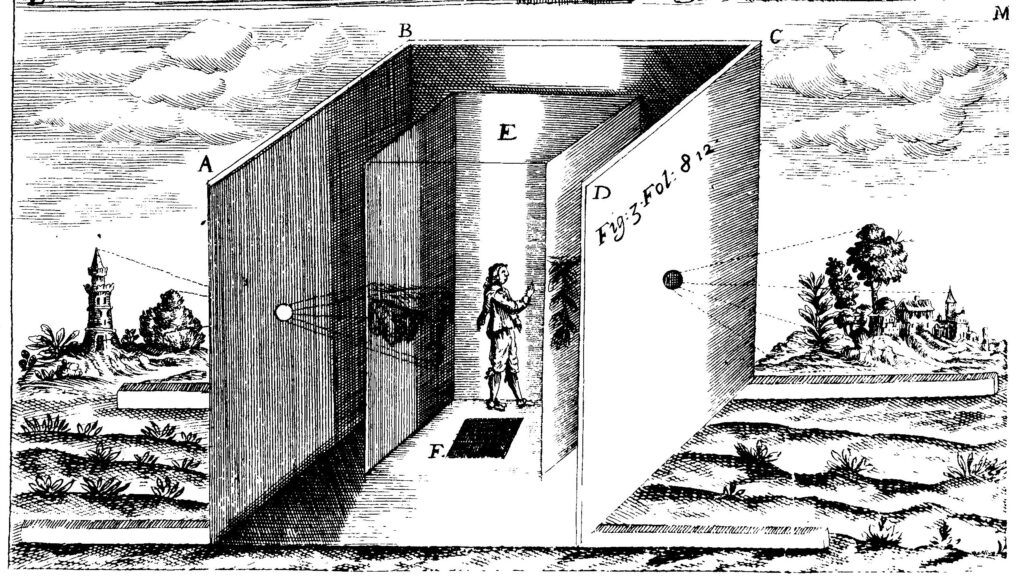
Silver Salts
In 1727, Johann Heinrich Schulze discovered that darkening of silver salts was caused by exposure to light. He showed this by using sunlight to form words in the salts. The resulting words were not permanent as the silver salts were still sensitive to light. What is now referred to as “fixing” the image was necessary. Fixing the image means to make the compound that is reactive to light no longer reactive so that the image will not change. Fixing an image was still a problem, but now that a means to project an image in a dark room with the camera obscura, and substances reactive to light were discovered, the first photograph would soon follow.
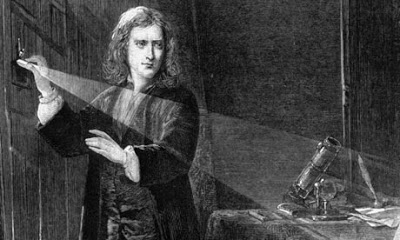
The First Photograph
Joseph Nicéphore Niépce was an inventor who lived near Chalon-sur-Saône, France. He was fascinated by lithography, the process of copying drawings onto porous stone to be printed in ink. He did not have the artistic training to engrave the lithographic stone himself and invented what he called heliography (sun drawing) to have light engrave the stone instead.
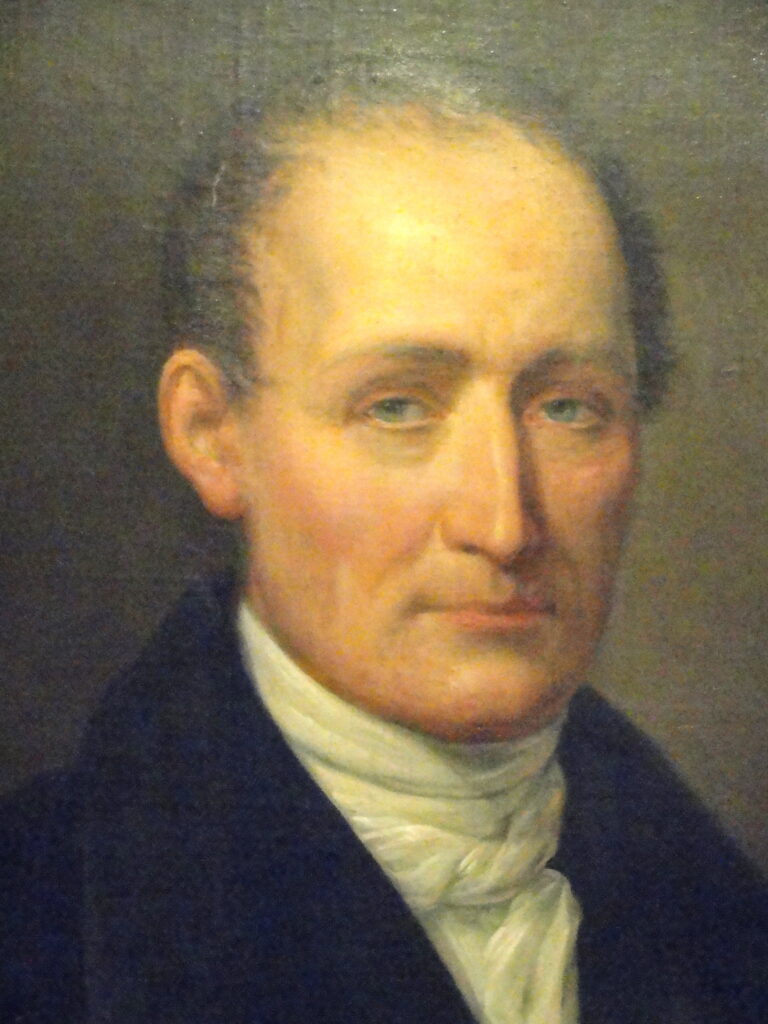
Niépce discovered that asphalt, like silver salts, was sensitive to light. It hardened instead of darkening, making it perfect for engraving and automatically fixed. To create a heliograph, Niépce oiled an engraving to make it transparent, placed it on a plate coated with a solution of bitumen of Judea (a type of asphalt) and lavender oil, and exposed the stone to sunlight. After some hours, the light areas of the engraving hardened, leaving the dark areas soft. The dark areas could then be washed away to leave a permanent and accurate copy of the original engraving. He used this process to copy engravings onto glass, zinc, and pewter plates.
In 1826, the first photograph was created by Niépce using a portable camera obscura and one of his heliographic pewter plates. The photograph was of the courtyard on his country estate, Gras, taken from an upper window of the house. The exposure time was believed to be around 8 hours.
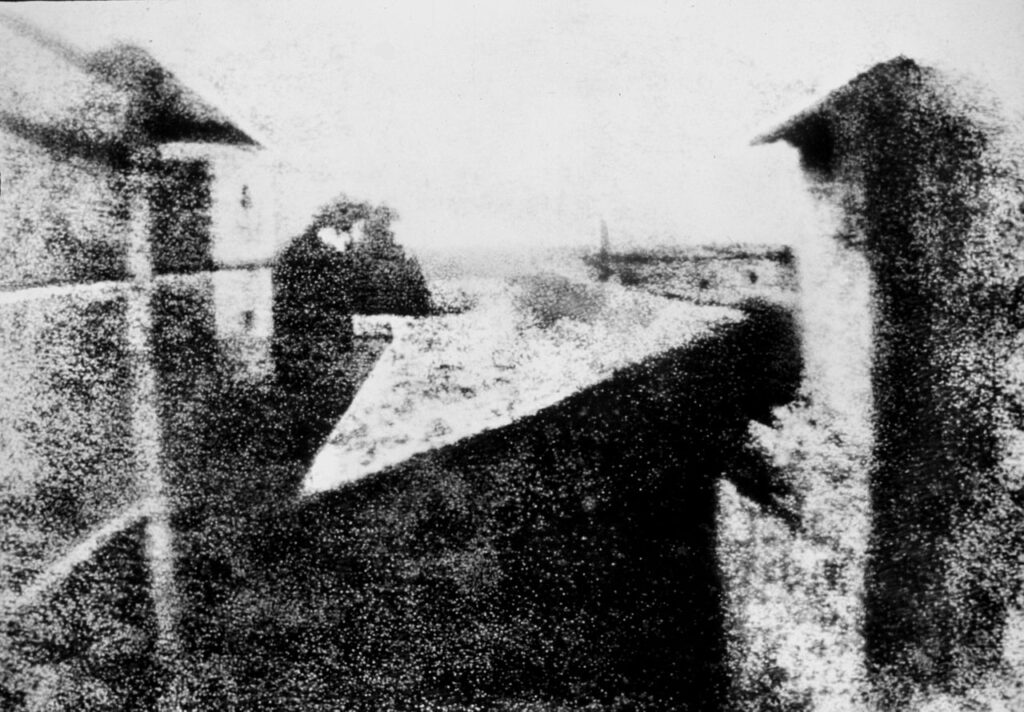
Improving Photography (The Daguerreotype)
Louis-Jacques-Mandé Daguerre was a scene painter for the Diorama in Paris, France. He and his partner Charles-Marie Bouton painted 45.5 by 71.5 feet paintings of famous places to be displayed with the use of backlighting in the Diorama. They also set up props, animals, and people in front of the painting and played music to make lively, entertaining scenes. He used the camera obscura for preliminary sketches of the scenes he painted but wished to produce more accurate depictions.
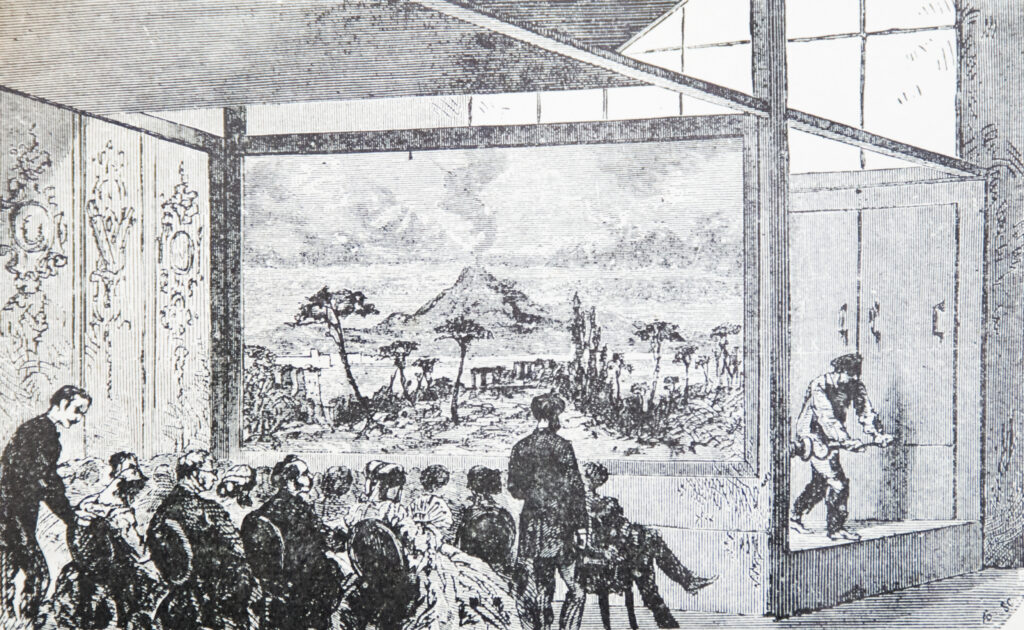
To accomplish that end, he partnered with Niépce in 1829. His goal was to shorten the exposure time and increase the clarity and accuracy of the Heliograph. They worked together for 4 years until Niépce’s death. That did not stop Daguerre’s work and in 1835, he discovered that exposing iodized silver on a polished copper plate to light makes an invisible image that can be made visible by the addition of mercury vapor. The mercury vapor settles on the exposed parts of the iodized silver, making a detailed image. With this method, the exposure time necessary was reduced from 8 hours to 30 minutes. This method was not fixed, however. Daguerre found a way to permanently fix the image around 1837 by dissolving the unexposed silver iodide in a solution of table salt. Daguerre then signed an agreement with Niépce’s son Isidore confirming the new method as Daguerre’s and naming it the daguerreotype.
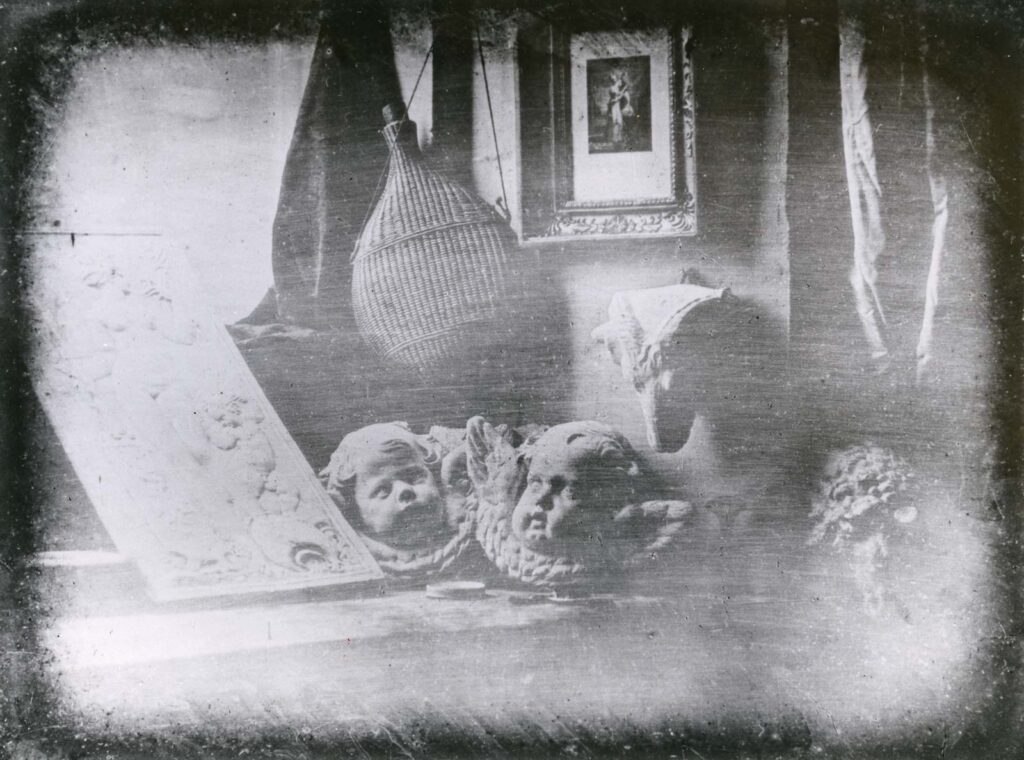
Daguerre and Isidore then sold the rights to the daguerreotype and heliograph to the French government in 1839 in exchange for annuities for life. Daguerre then wrote a booklet on his process, An Historical and Descriptive Account of the Various Processes of the Daguerreotype and the Diorama. It was immediately a best seller. 29 editions and translations were printed by the end of 1839. The daguerreotype was officially the first commercially successful form of photography.
First Photograph (Daguerreotype) with People
Daguerre took the first photograph with people in 1838 at Place de la République. It is believed that the two people in the lower left corner were still long enough to be seen in the image because one was shining the shoes of the other. It is also the oldest photograph of Paris.
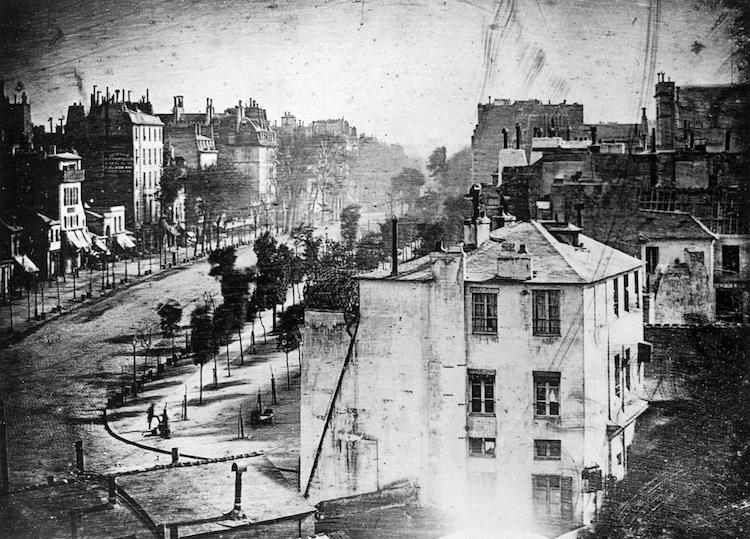
First Photograph (Daguerreotype) of a U.S. President
William Henry Harrison was the first president to be photographed on March 4, 1841 just after his inaugural speech. Unfortunately, the photo was lost. Because the photo was lost, many consider John Quincy Adams to be the first president photographed. The daguerreotype was taken in his home in Quincy, Massachusetts by Philip Haas in 1843. It was 14 years after he left office.

Photogenic Drawing
William Henry Fox Talbot, a chemist, linguist, and archaeologist had trouble drawing his scientific observations. In response to his poor artistic skills, he began developing a photographic process. By 1835, he had succeeded. He created photosensitive paper by soaking it in alternating solutions of sodium chloride (salt) and silver nitrate. The result was silver chloride integrated in the fibers of the paper. When exposed to light, the silver would darken forming a negative image. Talbot’s original method of fixing the image in a solution of sodium chloride did not work, and remained a failure, until his friend Sir John Herschel proposed using sodium thiosulfate to fix the negatives and waxing the paper to reduce the grain in 1839.
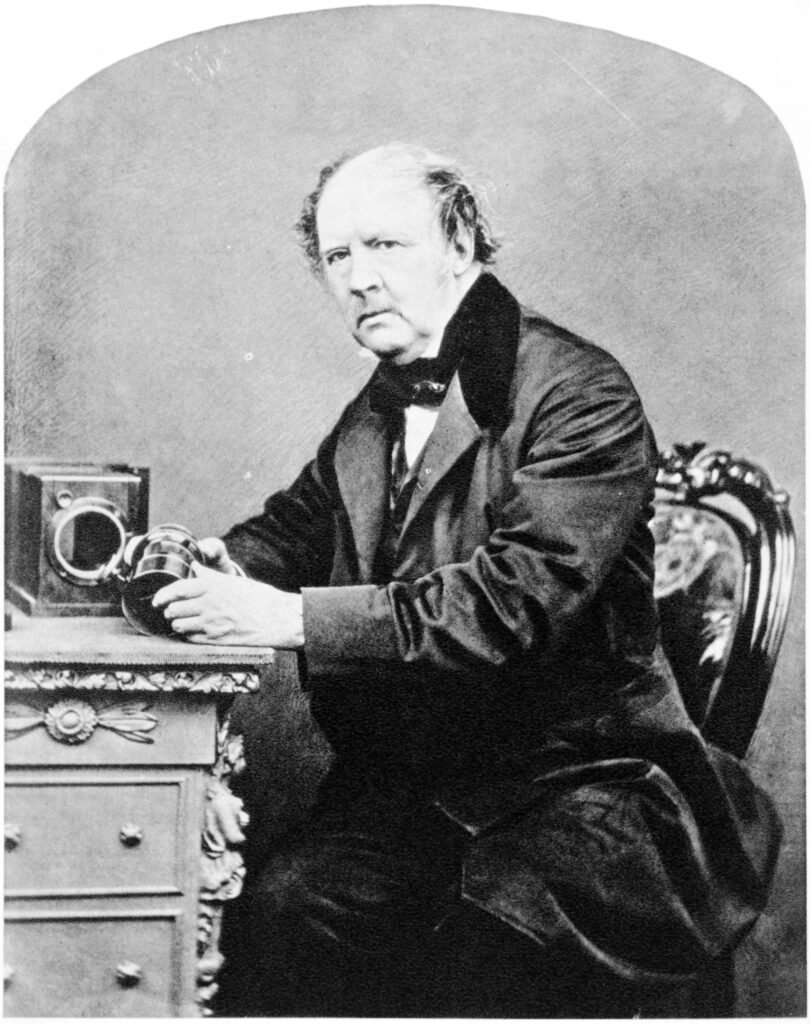
Why do Darkrooms Have Red Light?
In June 1841, a studio producing fine daguerreotypes was started on the roof of the Royal Adelaide Gallery in Britain. This studio made many improvements and discoveries about the nature of photography. Among them, the discovery that red light didn’t affect photosensitive materials and thus could be used as a non-destructive light source in darkrooms.
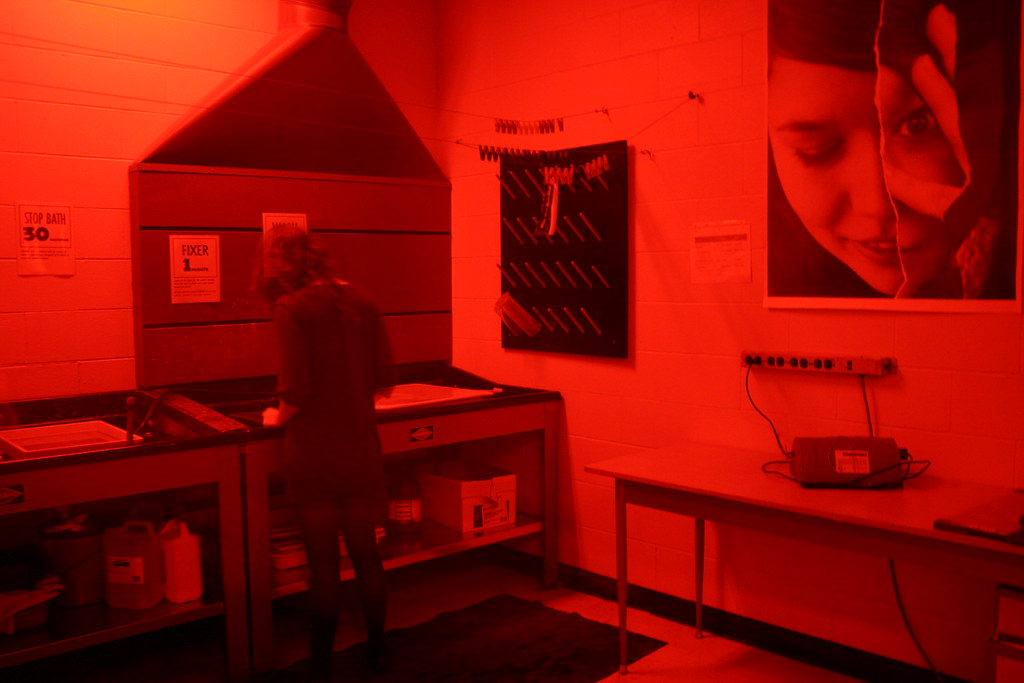
Collodion Process
In 1851, Frederick Scott Archer and Gustave Le Gray almost simultaneously invented what is called the collodion process. The collodion (wet plate) process involves coating, sensitizing, exposing, and developing photographic material in around 15 minutes. This process required a portable dark room due to its time-sensitive nature. It produced a negative of the image that could be used to make many prints. This was an advantage over daguerreotypes as that method produced a unique positive image that could not be reproduced. The collodion process was also safer than daguerreotypes as it did not require the toxic mercury fuming boxes for image processing. As the collodion process used glass to capture the image, it was also much cheaper than the silver-plated polished copper plates required by the daguerreotype process.
Portraiture was the main industry in photography at the time. Because of the very short exposure time required by the collodion method along with its other advantages, it almost entirely replaced the daguerreotype by the end of the 1860s.
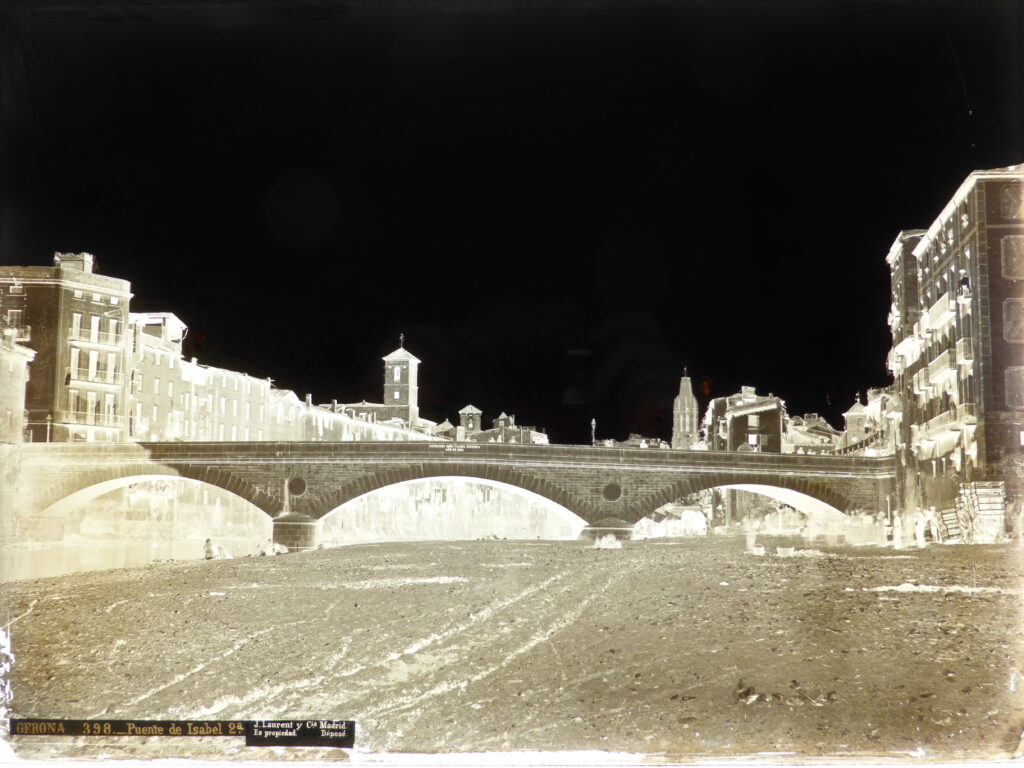
Attribution: CARLOS TEIXIDOR CADENAS CC BY-SA 4.0
The First Color Photograph
Thomas Sutton took the first fixed color photograph in 1861 by projecting 3 separate photographs on top of one another; one taken with a red filter, one with green, and one blue. The resulting image was highly flawed due to the insensitivity of current photosensitive material to the color spectrum.
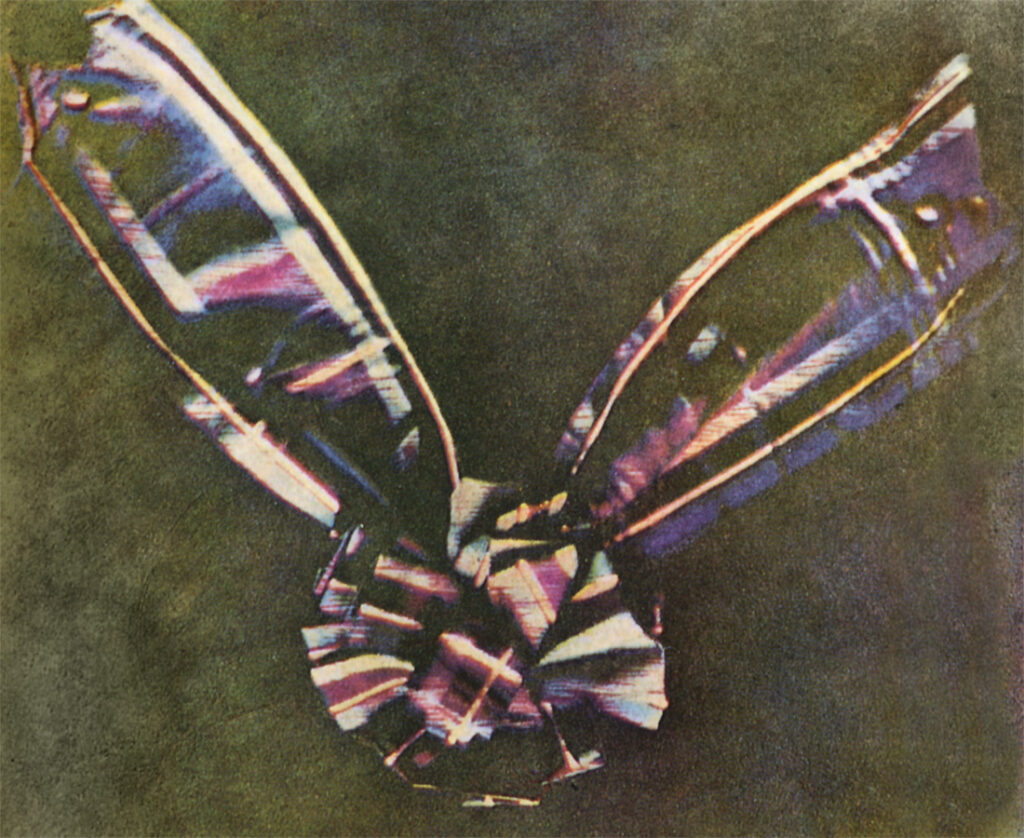
Improving Color Photography
Auguste and Louis Lumière invented the Autochrome plate. It became commercially available in 1907. The idea was to take a single photograph through a mosaic of tiny color filters and view the photograph through the same filter. If the mosaic could be made small enough, red, green, and blue would appear to blend together.
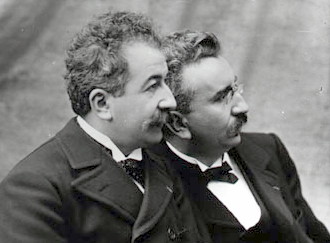
The first handheld color photography was available in 1936 with the invention of Kodachrome film. It captured the red, green, and blue colors in three separate emulsions and through processing made complementary cyan, magenta, and yellow dye images. This multilayer emulsion method for chemical color photography is still in use today.
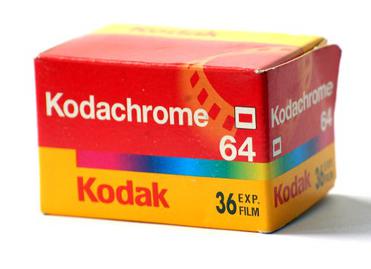
Instant Photography
American scientist Edwin Land is credited with the invention of the first commercial instant camera. The model 95 Land Camera was first sold in Jordan Marsh department store on November 26, 1948 for $89.95 (around $1000 today). Land was the co-founder of the Polaroid Corporation. The cameras made by Polaroid were revolutionary for their ability to expose and chemically develop photographic material in-camera in under a minute. This form of photography has seen a recent revival and is still popular today.
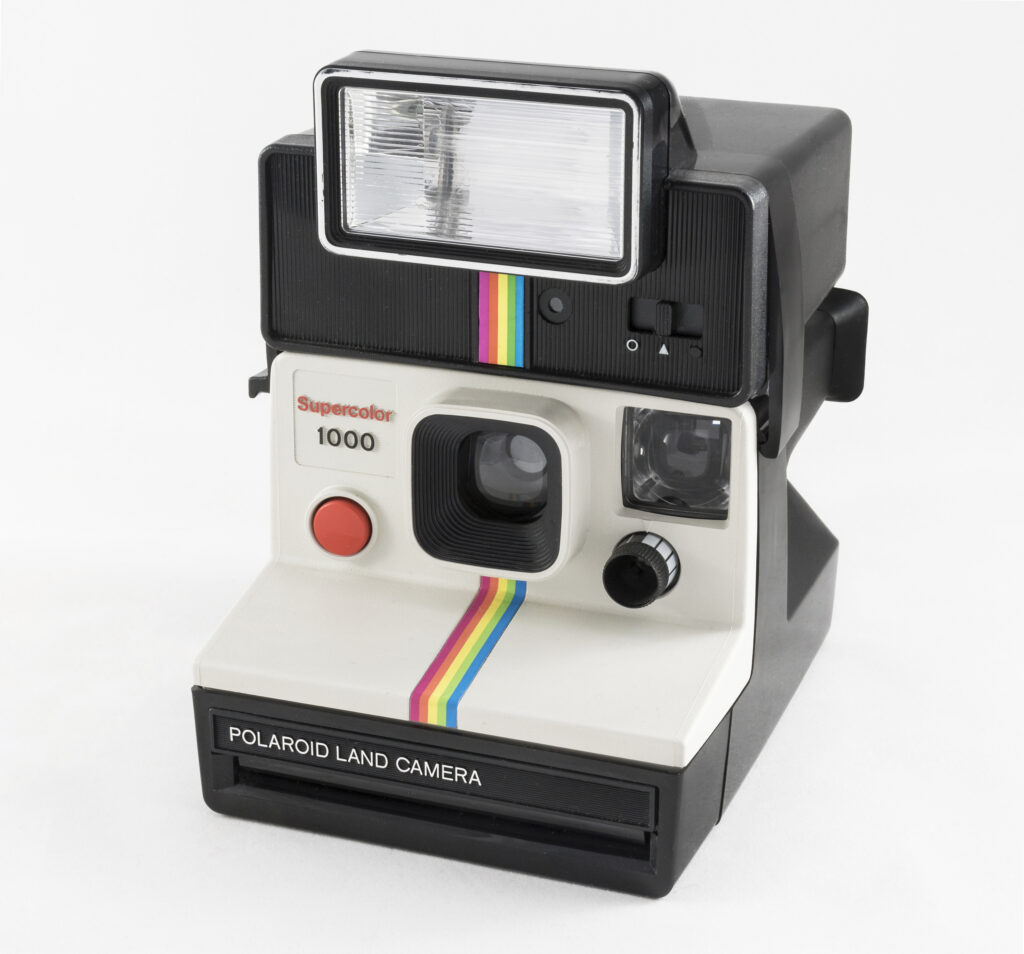
Attribution: Jacek Halicki CC BY-SA 4.0
Digital Photography
Steven Sasson, an Eastman Kodak engineer, is recognized as the inventor of the first digital camera. In 1975 he used Motorola parts, a Kodak film-camera lens, and Fairchild CCD electronic sensors to create the 8-pound monster. It had a resolution of .01 megapixels and required a 23 second exposure to take its first photo. Much improvement was soon to follow.
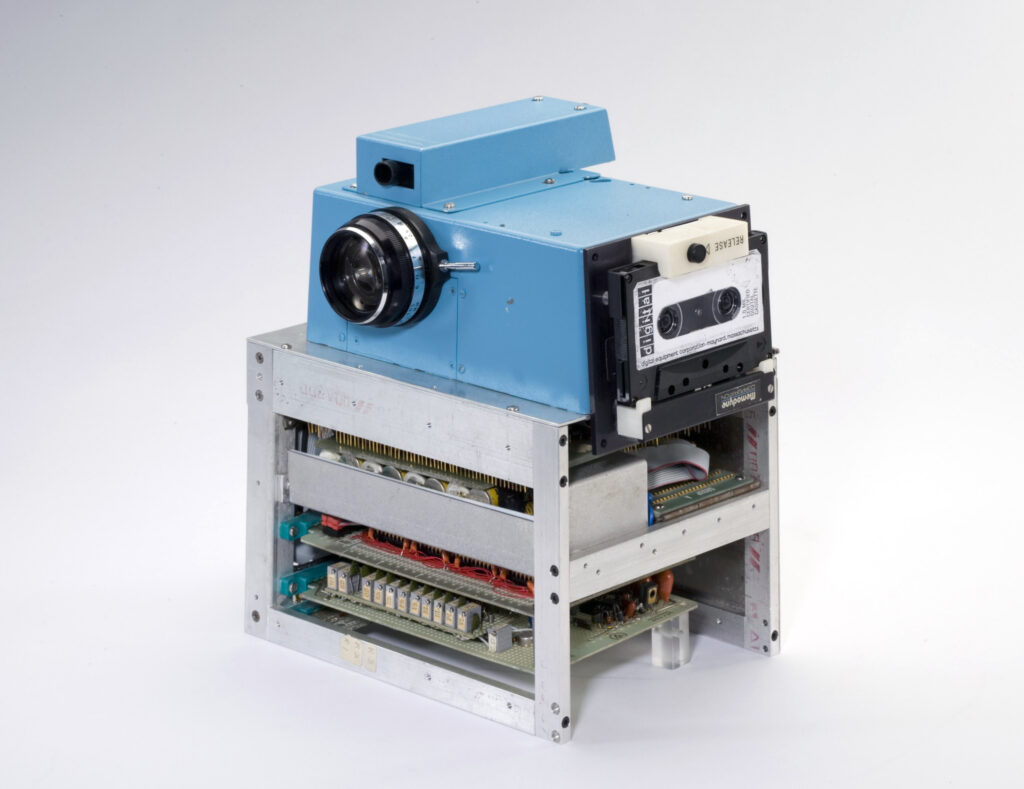
Attribution: Brett Jordan CC BY 2.0
JPEG and MPEG file standards were created in 1988. The first true digital camera, the Dycam Model 1 was released in 1990. It used CCD image sensors, could connect to PCs, and stored its images digitally. It had a resolution of 0.09 megapixels and cost around $1000.
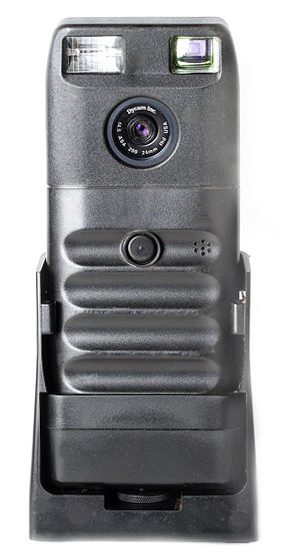
The first professional digital SLR camera was released in 1991. The Kodak DCS-100 cost $13,000 and was made for photojournalists. It had a 1.3-megapixel sensor. This camera was not widely accepted, and most photographers continued to shoot on film. The camera might have been a failure, but it started a revolution. Almost all professional and amateur photography is now done on digital cameras.
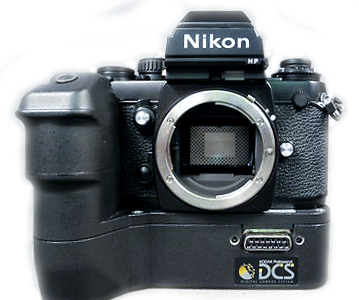
Art and Photography Clash
From the start, art and photography have always clashed. The first criticisms were that photography was a purely mechanical process, not artistic expression. Photographers would retort that the camera limits users to capturing something real, but creative expression still exists. Much like the artist chooses a paint, the photographer must choose the settings and apply filters. Photographers, like painters must also have compelling composition. With the advent of digital photography, the door was opened to photo editing. This makes photography even more indistinguishable from other forms of art as the realm of the imaginary is opened and creativity and technical skill are the only barriers to what can be created.
Thank you for reading! I hope you enjoyed the article!
